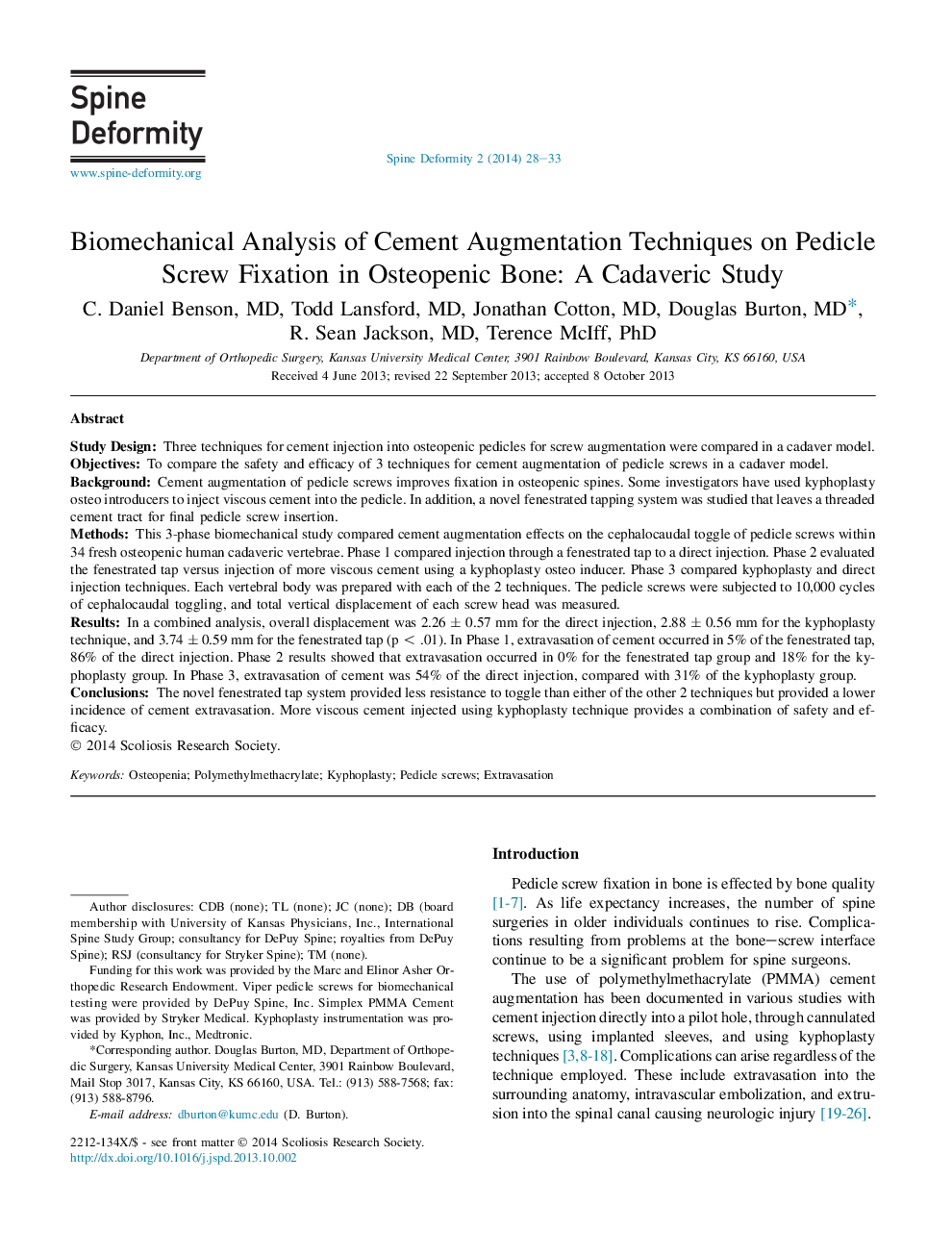| کد مقاله | کد نشریه | سال انتشار | مقاله انگلیسی | نسخه تمام متن |
|---|---|---|---|---|
| 4095423 | 1268533 | 2014 | 6 صفحه PDF | دانلود رایگان |
Study DesignThree techniques for cement injection into osteopenic pedicles for screw augmentation were compared in a cadaver model.ObjectivesTo compare the safety and efficacy of 3 techniques for cement augmentation of pedicle screws in a cadaver model.BackgroundCement augmentation of pedicle screws improves fixation in osteopenic spines. Some investigators have used kyphoplasty osteo introducers to inject viscous cement into the pedicle. In addition, a novel fenestrated tapping system was studied that leaves a threaded cement tract for final pedicle screw insertion.MethodsThis 3-phase biomechanical study compared cement augmentation effects on the cephalocaudal toggle of pedicle screws within 34 fresh osteopenic human cadaveric vertebrae. Phase 1 compared injection through a fenestrated tap to a direct injection. Phase 2 evaluated the fenestrated tap versus injection of more viscous cement using a kyphoplasty osteo inducer. Phase 3 compared kyphoplasty and direct injection techniques. Each vertebral body was prepared with each of the 2 techniques. The pedicle screws were subjected to 10,000 cycles of cephalocaudal toggling, and total vertical displacement of each screw head was measured.ResultsIn a combined analysis, overall displacement was 2.26 ± 0.57 mm for the direct injection, 2.88 ± 0.56 mm for the kyphoplasty technique, and 3.74 ± 0.59 mm for the fenestrated tap (p < .01). In Phase 1, extravasation of cement occurred in 5% of the fenestrated tap, 86% of the direct injection. Phase 2 results showed that extravasation occurred in 0% for the fenestrated tap group and 18% for the kyphoplasty group. In Phase 3, extravasation of cement was 54% of the direct injection, compared with 31% of the kyphoplasty group.ConclusionsThe novel fenestrated tap system provided less resistance to toggle than either of the other 2 techniques but provided a lower incidence of cement extravasation. More viscous cement injected using kyphoplasty technique provides a combination of safety and efficacy.
Journal: Spine Deformity - Volume 2, Issue 1, January 2014, Pages 28–33
